A few years ago I took cuttings from my favorite local wild grape vine and grew them in my backyard along the fence around our pool. Two amazing things happened. First, one of the vines I planted grew like absolute gangbusters, occupying fifty feet of fence in two years. Second, the original vine I took the cuttings from was cut back to the point that the source vine has disappeared entirely. So it is pretty amazing that these grapes still exist! What makes these grapes special? Most local wild grapes are small and extremely tart and acidic. These grapes are much larger, closer to the size of a concord grape, with improved sweetness and flavor.
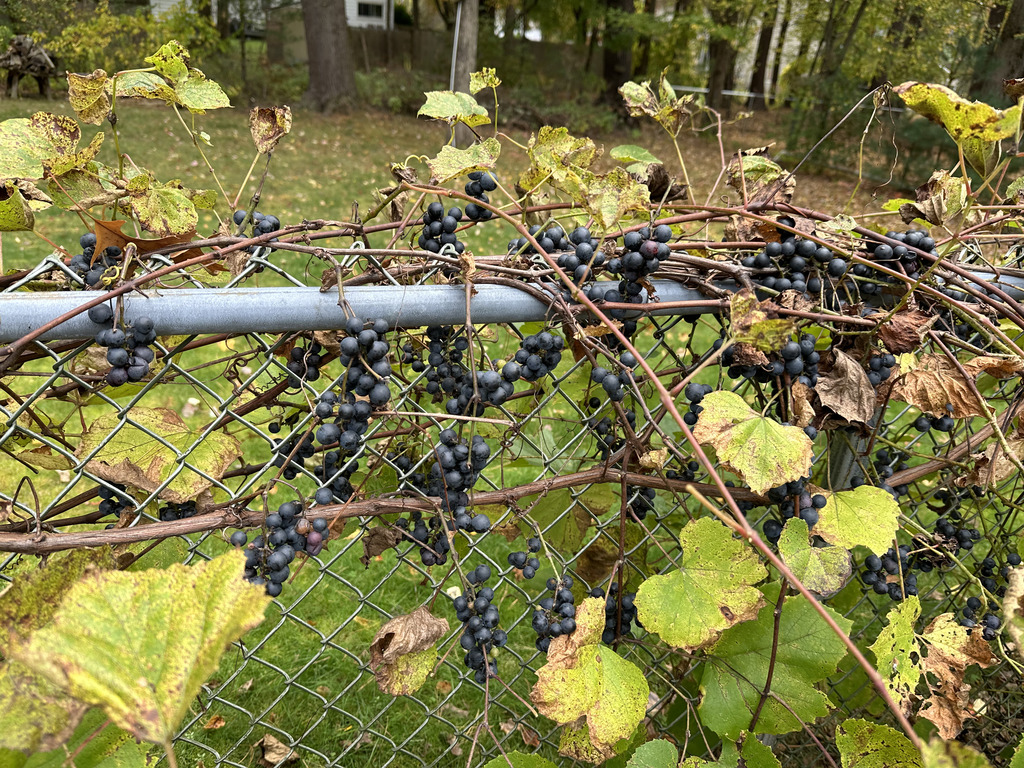
Wild American grapes are called fox grapes. You will read that wine made from wild American grapes will taste "foxy", yet I struggle to figure out what this is supposed to mean. The explanation I find most satisfying suggests the name "fox grape" originated from french settlers who tried to make wine with these grapes and were disappointed with the result, calling them "faux" grapes, which translates to "false" or "fake" grapes. Faux became fox, and therefore the "foxy" taste is merely the taste of wild grape, which is not unlike the taste of wild grape candy.
Will these grapes make good wine? Personally? I don't think so. But that hasn't stopped me from trying. And this batch may be the best possible example of what fox grapes can produce. Or at least the best possible that I am likely to come in contact with. What makes this batch special is that nothing was done to control the end result. The grapes were allowed to become the fermented version of themselves without any interference from the addition of yeasts, sulfites, or sugars. It is simply the juice pressed from the grapes, left to ferment under an airlock, which produced wine with an estimated 10% ABV which, it seems to me, is pretty solid for wine made from fake grapes!
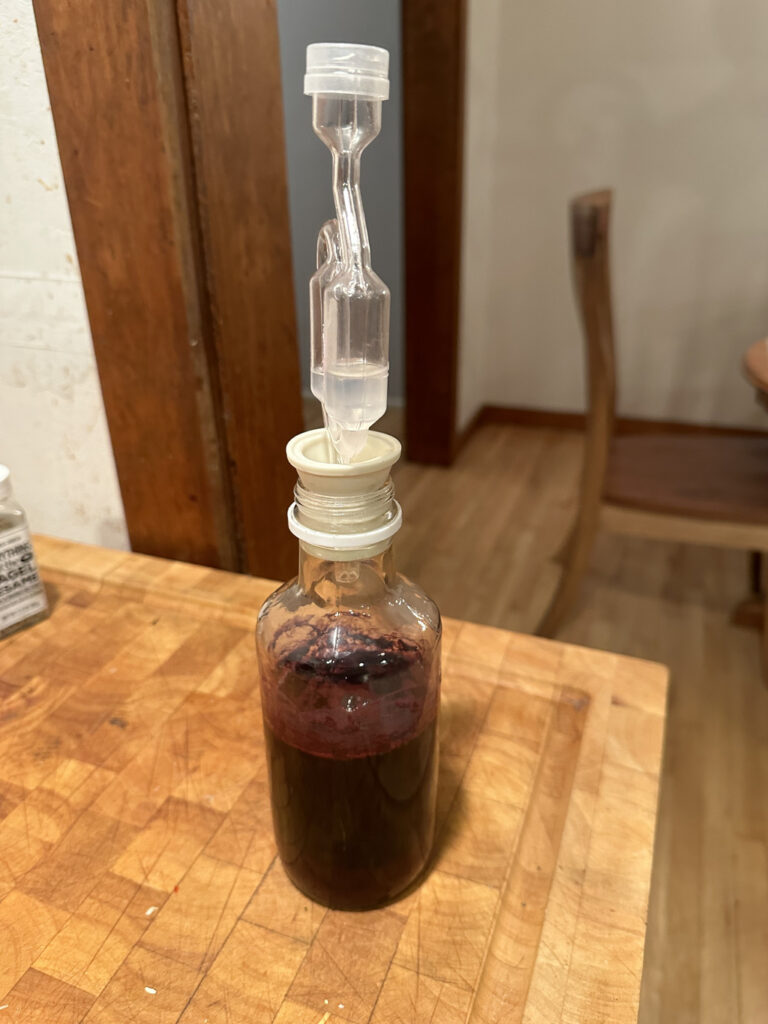
Prior to committing to harvesting all the grapes, I made a small eight ounce test batch of wine. My notes from the test batch state, "It tasted very sweet and quite good actually. There was almost an inch of sediment even in this tiny bottle. I think it is worth proceeding with making regular wine out of this."
As harvest time approached, I tasted the grapes almost daily. Time got ahead of me and in my mind the prime time had passed by a few days, but I picked the grapes at the first opportunity. I was able to harvest one very large bowl of grapes, crush them by hand, and start them fermenting in a gallon jug. The wine fermented in the gallon jug with an airlock for just under one month. On 11/3/24 I transferred the wine from the gallon jug to a half-gallon growler for secondary fermentation.
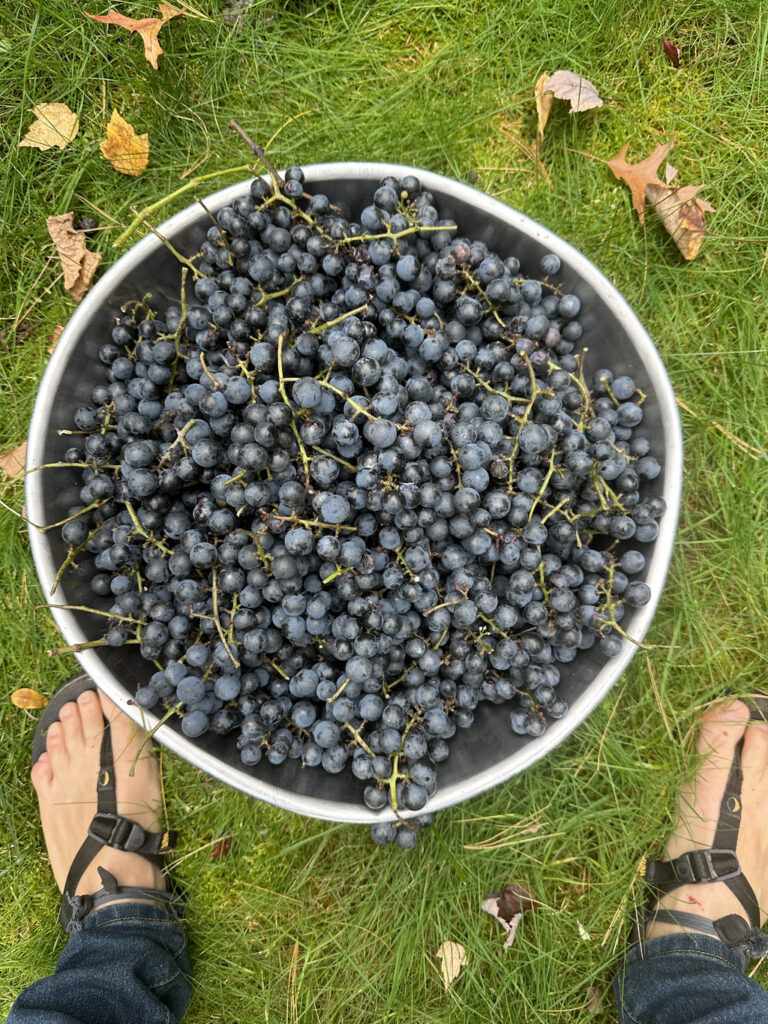
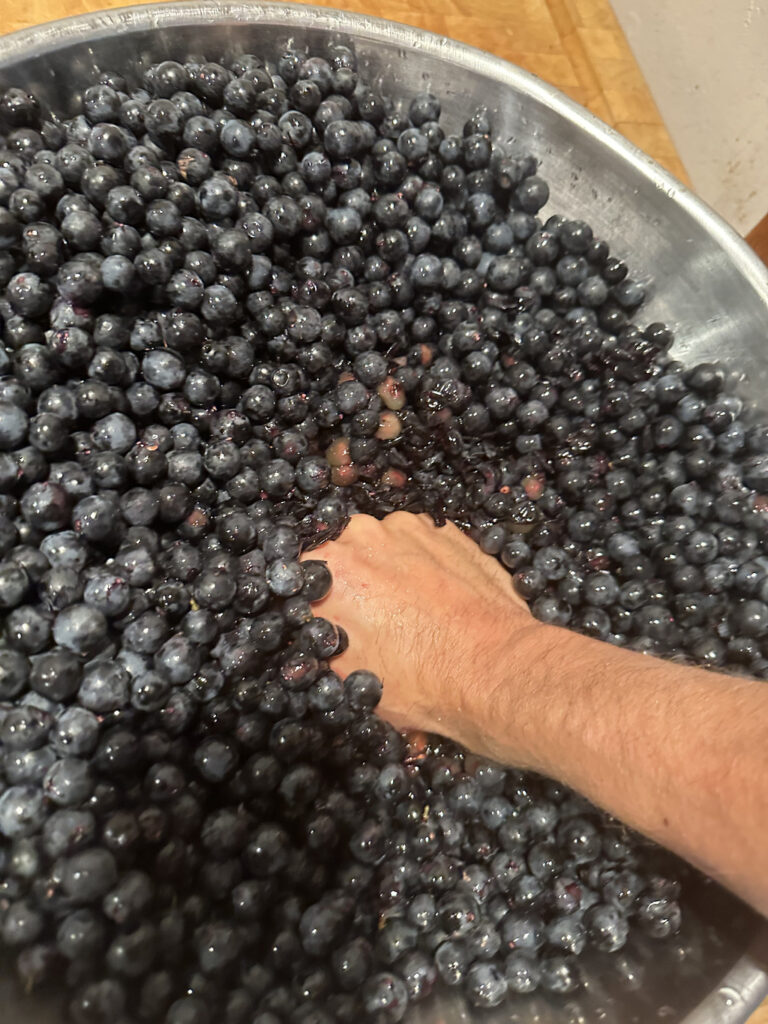
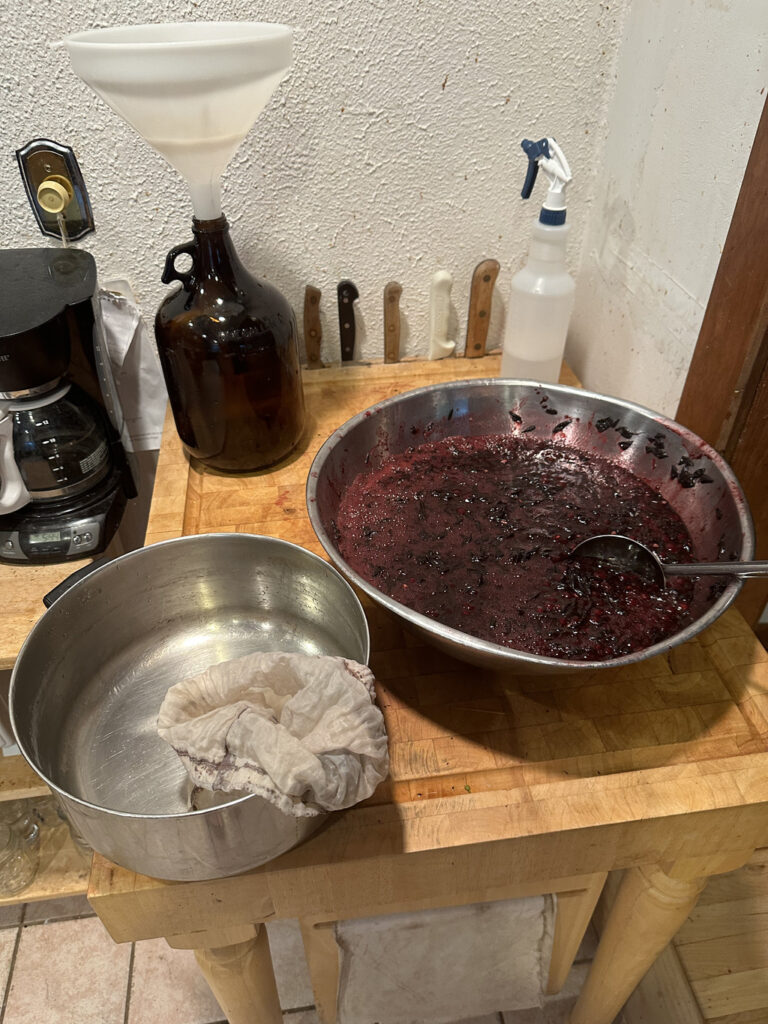
There was also enough leftover to fill a 375ml bottle, which I corked and stored in the basement. The half-gallon growler was left for a proper secondary fermentation until 12/23/24 when I transferred the wine into bottles.
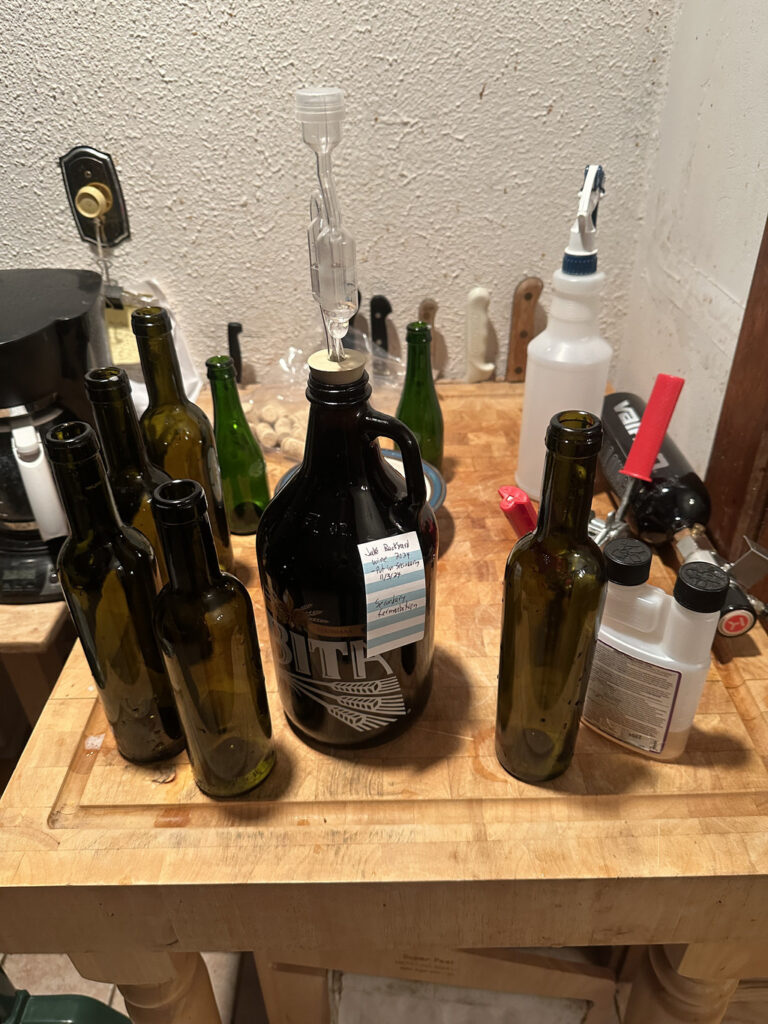
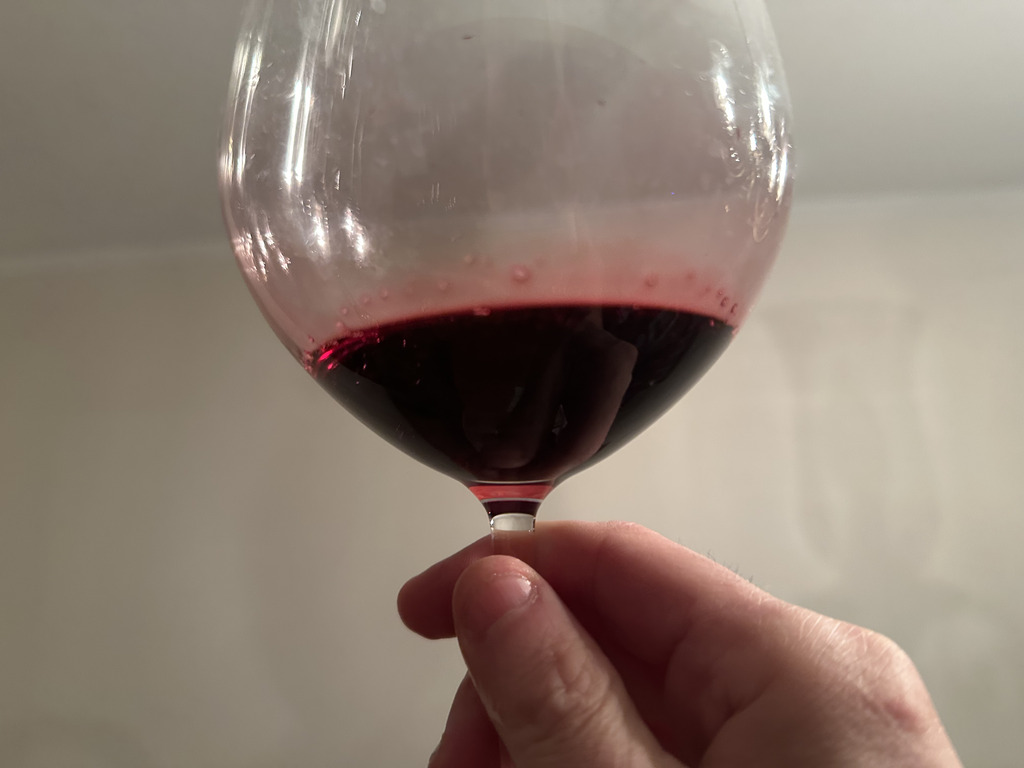
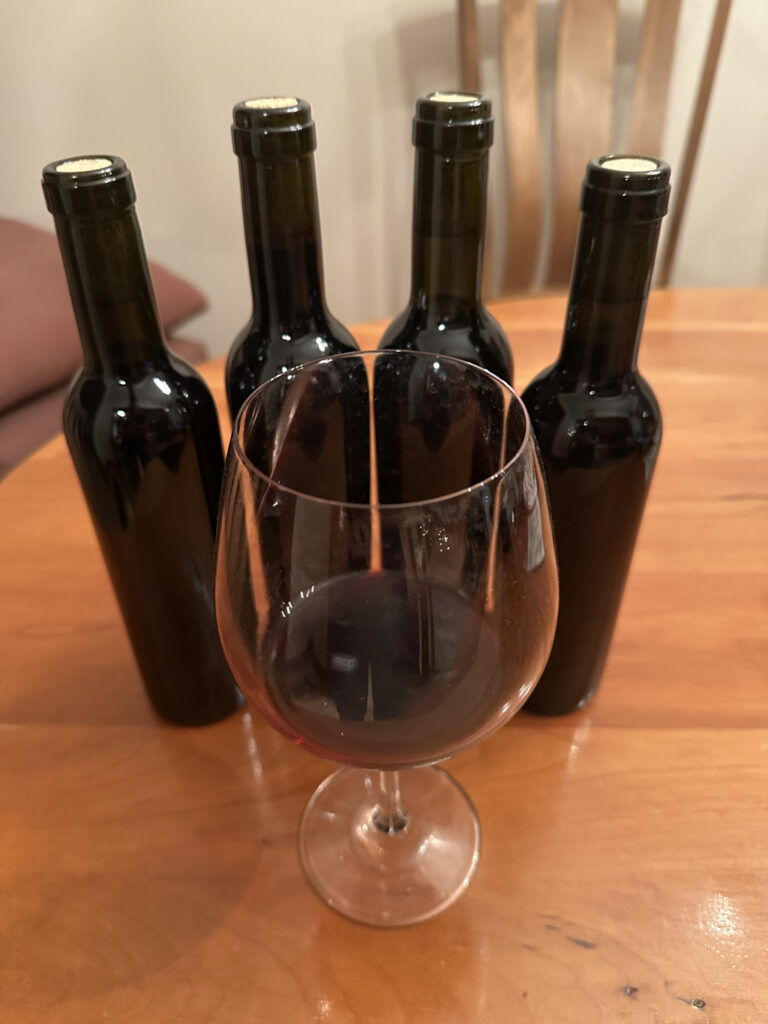
I was able to have a taste and taking into account the fact that the terroir is "my backyard in upstate New York" and the grape varietal is "fake grapes", it is totally ok! Pretty good even! It is slightly acidic and tart, but the end product is wine of its own distinction. It represents well the terroir of my backyard. And is quite drinkable. Pairs well with an antacid tablet.
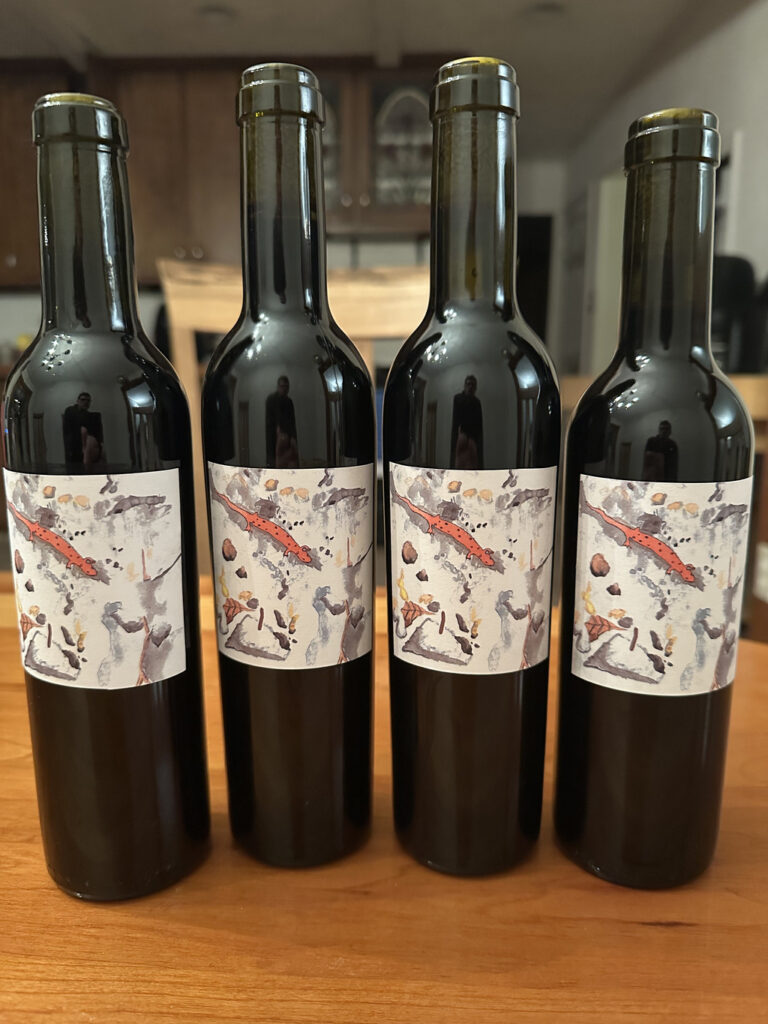
I am happy to say I have a few 375ml bottles of wine that uniquely represent the native grapes of Clifton Park!
